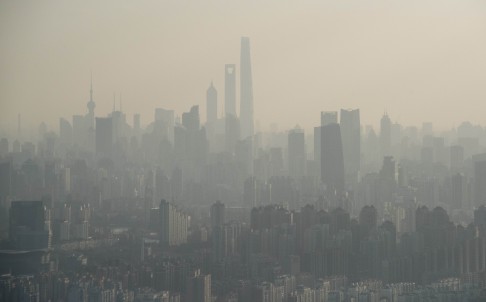Stephen Chen
binglin.chen@scmp.com

People using coal heaters is a major contributor to China's endemic smog problem. Photo: AFP
A technological breakthrough by mainland Chinese scientists could cut your winter heating bill in half and reduce reliance on heavy-polluting fossil fuel heaters.
Inspired by the wings of the cicada, researchers with the Chinese Academy of Sciences’ Suzhou Institute of Nano-tech and Nano-bionics developed the world's first heat pump coil immune to icing up in cold weather.
Heat pumps – used in many HVAC (heating, ventilating, and air conditioning) units – are among the most efficient ways to warm a house or apartment, producing up to a dozen kilowatt hours of heat per one kilowatt hour of electricity.
Household heat pumps work like fridges in reverse, vaporising liquid refrigerant at temperatures of -45 degrees Celsius or below and sucking heat from outside and transporting it indoors.
Such devices are far more energy efficient than electric heaters or natural gas boilers, which produce less heat than the energy they consume.
Advances in heat pump technology has enabled the installation of the devices in even extreme environments like Antarctica.
But a serious headache has long bothered users for decades and weakened the technology in competition with other methods.
Over time, ice tends to build up on the heat-exchange coil and significantly reduce its efficiency.
When that happens, the heat pump must stop working and instead expend energy melting the ice.
The defrost cycle can be long, noisy and wasteful of electricity while also sometimes causing an uncomfortable plunge in temperature throughout the user's home.

In a series of papers in the journal Applied Materials and Interfaces, professor Gao Xuefeng and colleagues described their one-stop solution to the icing problem.
"This is the first ice-free heat pump coil in history," Gao said, adding that the technology could have a dramatic effect in China, which produces more than 70 per cent of the world's HVAC units.
The solution developed by Gao's team was inspired by the cicada's wing, which repels water by bouncing it off. After studying the wing's natural structure, the team developed a film implanted with "needles" each as small as a few nanometers.
When water drops on the needles meet and merge into one, they release just enough energy to cause the needle to bend and spring back, sending the liquid darting off the surface like a pole jumper.
"The biggest challenge is to direct the tiny energy produced by the merging of the two droplets," Gao said.
"Icing on the coils is the biggest problem for heat pumps currently. Solving the issue can accelerate the replacement of dirty coal heating systems across China and significantly reduce air pollution," he said.
The team has found a relatively simple and low-cost method of mass producing the frost-resistant coils, but the technology upgrade will require an enormous amount of investment.
Building a new factory to produce the coils will cost hundreds of millions of yuan. Only the most courageous entrepreneurs would be able to take the first move, Gao said.
The team said they were ready to produce the first commercial prototype in less than three years.

